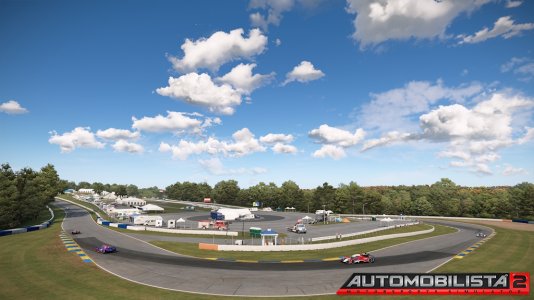In this topic, I wish to explain exactly how an otherwise rational thinker was inclined to flippantly dismiss cockpit safety, as well as exactly what caused me to drop the attitude recently. I'm laying this tangled web out one last time to show that I wasn't insane or trolling, just someone who viewed certain actions in the worst possible light and formed a narrative out of it.
The Catalyst
The saga begins in 2017. The Halo had undergone preliminary testing for a good while before this, but signs were pointing to it being off the table in favour of Shield testing by mid-year. Then the Vettel Shield comment happened, and shortly afterwards, the Halo was not only back on the agenda, but forced through for 2018 despite the F1 teams voting it down 9-1.
As strange as it may seem to you now, the fan response at the time was overwhelmingly negative. I was so convinced that this would be the death of F1 that I acted like the sport no longer existed in most conversations from that point forward...
LeClerc
But the sport continued without me, and the incident may people point to as a turning point happened at Spa 2018. Alonso's front right wheel made contact with LeClerc's front Halo stem, and suddenly people couldn't praise the Halo enough.
So why didn't this work for me? Well for starters, I had stopped watching F1, because if you no longer like something, why keep watching it? This logic made me assume that others had done the same, so my mind had internalized that those left were fans who were already pro-Halo and looking for an opportunity to claim victory and superiority.
I also had plausible deniability in the form of the momentum of the front right wheel heading away from LeClerc's head before it even hit the Halo. Combined with Spa 2012 where Alonso was on the other end of a similar crash and fared okay without a Halo, it was easier for me to reaffirm my pre-existing biases than agree to any compromise with those whom I had bitter arguments with on the internet.
Grosjean
Those who weren't convinced by the LeClerc incident will probably point to this instead as the crash that vindicated the Halo's existence. The head-on collision with a railing that could just as easily have claimed his life, instead walked away from despite both the collision and the subsequent fireball.
Except I once again doubled down on my anti-Halo stance at the time, though at this point I was clutching at straws because I felt the fanbase (which at this point had recovered to it's highest point in years) were actively spiting me by pretending to have never criticized the Halo in the first place. So I had to come up with some form of counter-narrative to be able to say that those who were mean to me were wrong, and I arrived at the idea that, even if the computer reconstruction showed a guard rail being deflected by the Halo, the increase in the number of dangerous crashes in recent years was also caused by the Halo, meaning it was only protecting drivers it had already endangered.
Flimsy argument, I know, and that's why it eventually fell apart after I actually gave the recent W-Series crash an objective look...
My turning point
What I really needed all along was an example that refuted all of my arguments at once.
I can't say that the Halo helped cause the crash, as spinning off in rapidly declining conditions isn't something a little extra vision can help with. I can't say that the footage is inconclusive either, as Eaton's front left is clearly on a collision course with Moore's head until it hits the Halo. So presented with this, what do I have left? The answer is nothing, so I have to come to terms with the fact that, despite any valid complaints I might have had, I was wrong.
As an epilogue, I don't know if Verstappen's underside would've definitely tipped down into Hamilton's cockpit at Monza, but with this new outlook on the Halo, I can say that we're better off not letting fate decide in situations like that.
So what now?
There are still a couple of things troubling me. Mainly to do with how the FIA handled this back in 2017. Why did they bother to convene a vote at all if they knew the Halo had to be implemented by 2018? And why wait until after they received the predictable backlash to start presenting their evidence publicly?
Aside from that, I want to reconnect with the motorsport community, try to repair some burnt bridges, and soon enough watch my first F1 race since Singapore 2017. I'd like to be able to talk about a sport I once loved and can love again in at least a few places, even if I've burnt bridges in others.
The Catalyst
The saga begins in 2017. The Halo had undergone preliminary testing for a good while before this, but signs were pointing to it being off the table in favour of Shield testing by mid-year. Then the Vettel Shield comment happened, and shortly afterwards, the Halo was not only back on the agenda, but forced through for 2018 despite the F1 teams voting it down 9-1.
As strange as it may seem to you now, the fan response at the time was overwhelmingly negative. I was so convinced that this would be the death of F1 that I acted like the sport no longer existed in most conversations from that point forward...
LeClerc
But the sport continued without me, and the incident may people point to as a turning point happened at Spa 2018. Alonso's front right wheel made contact with LeClerc's front Halo stem, and suddenly people couldn't praise the Halo enough.
So why didn't this work for me? Well for starters, I had stopped watching F1, because if you no longer like something, why keep watching it? This logic made me assume that others had done the same, so my mind had internalized that those left were fans who were already pro-Halo and looking for an opportunity to claim victory and superiority.
I also had plausible deniability in the form of the momentum of the front right wheel heading away from LeClerc's head before it even hit the Halo. Combined with Spa 2012 where Alonso was on the other end of a similar crash and fared okay without a Halo, it was easier for me to reaffirm my pre-existing biases than agree to any compromise with those whom I had bitter arguments with on the internet.
Grosjean
Those who weren't convinced by the LeClerc incident will probably point to this instead as the crash that vindicated the Halo's existence. The head-on collision with a railing that could just as easily have claimed his life, instead walked away from despite both the collision and the subsequent fireball.
Except I once again doubled down on my anti-Halo stance at the time, though at this point I was clutching at straws because I felt the fanbase (which at this point had recovered to it's highest point in years) were actively spiting me by pretending to have never criticized the Halo in the first place. So I had to come up with some form of counter-narrative to be able to say that those who were mean to me were wrong, and I arrived at the idea that, even if the computer reconstruction showed a guard rail being deflected by the Halo, the increase in the number of dangerous crashes in recent years was also caused by the Halo, meaning it was only protecting drivers it had already endangered.
Flimsy argument, I know, and that's why it eventually fell apart after I actually gave the recent W-Series crash an objective look...
My turning point
What I really needed all along was an example that refuted all of my arguments at once.
I can't say that the Halo helped cause the crash, as spinning off in rapidly declining conditions isn't something a little extra vision can help with. I can't say that the footage is inconclusive either, as Eaton's front left is clearly on a collision course with Moore's head until it hits the Halo. So presented with this, what do I have left? The answer is nothing, so I have to come to terms with the fact that, despite any valid complaints I might have had, I was wrong.
As an epilogue, I don't know if Verstappen's underside would've definitely tipped down into Hamilton's cockpit at Monza, but with this new outlook on the Halo, I can say that we're better off not letting fate decide in situations like that.
So what now?
There are still a couple of things troubling me. Mainly to do with how the FIA handled this back in 2017. Why did they bother to convene a vote at all if they knew the Halo had to be implemented by 2018? And why wait until after they received the predictable backlash to start presenting their evidence publicly?
Aside from that, I want to reconnect with the motorsport community, try to repair some burnt bridges, and soon enough watch my first F1 race since Singapore 2017. I'd like to be able to talk about a sport I once loved and can love again in at least a few places, even if I've burnt bridges in others.









